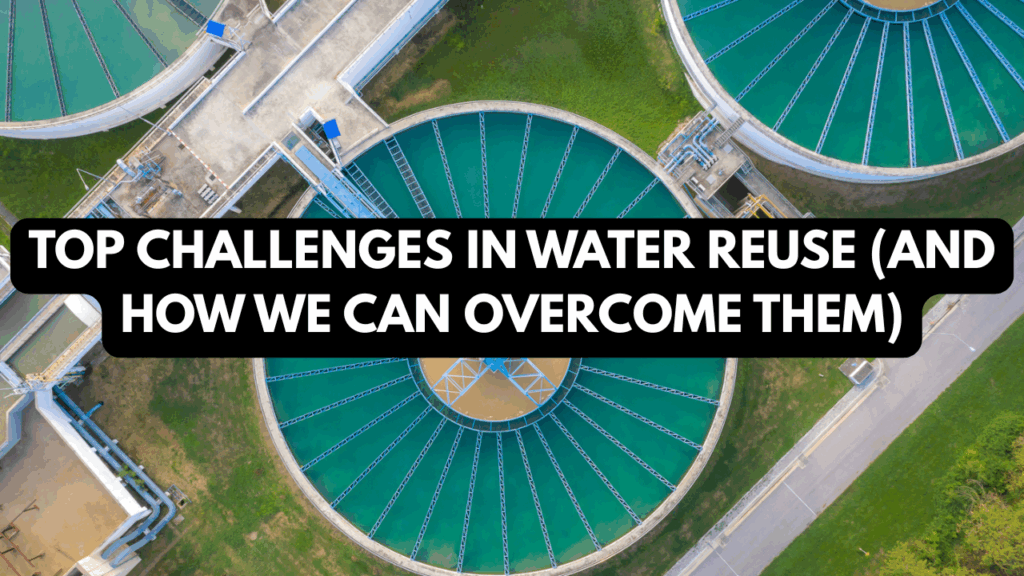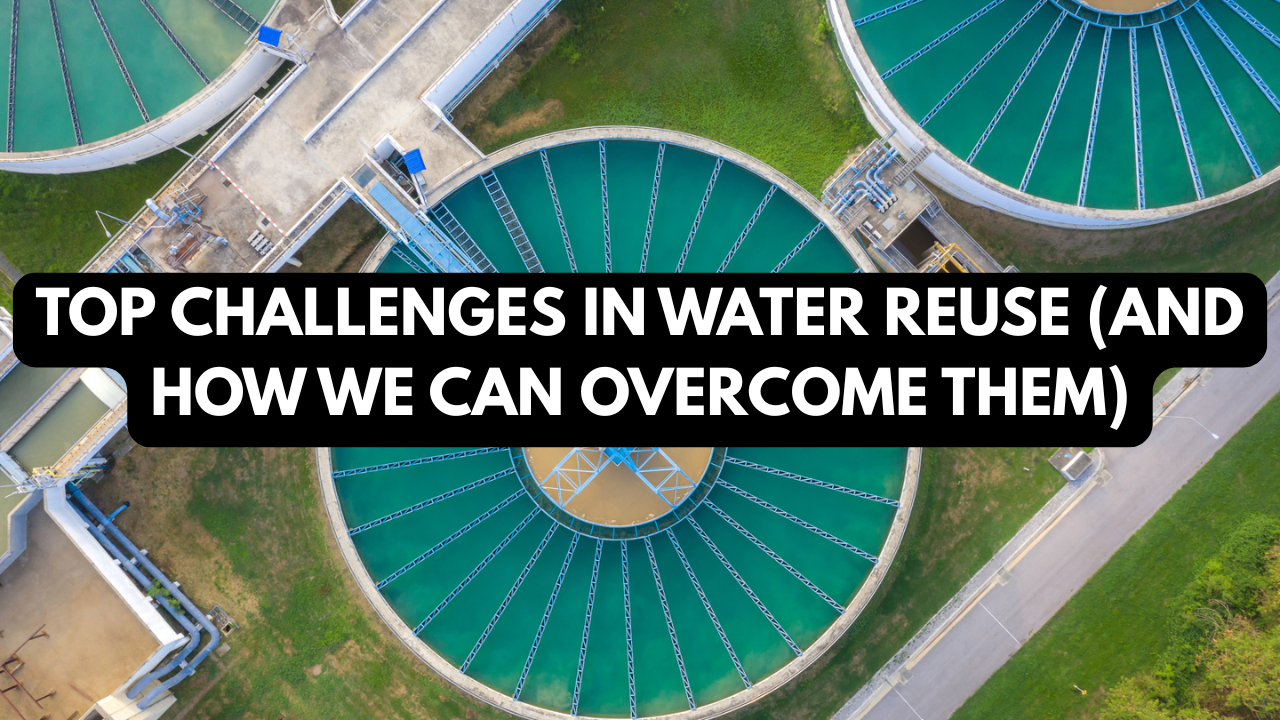
As global populations grow and climate change tightens the grip on freshwater resources, water reuse has become one of the most sustainable solutions. Reclaimed water can support agriculture, industries, and even drinking supplies. Yet, despite its proven benefits, widespread adoption faces several hurdles.
This article breaks down the top challenges in water reuse and explores practical strategies to overcome them, supported by examples from around the world.
Why Water Reuse Matters
- Addresses water scarcity in drought-prone regions.
- Reduces pollution by limiting untreated wastewater discharge.
- Supports agriculture with reliable irrigation supplies.
- Enhances sustainability for industries and urban water systems.
However, the road to universal water recycling is not without obstacles.
Key Challenges in Water Reuse and Solutions
1. Public Perception and Trust
One of the biggest barriers is the “yuck factor”—people’s discomfort with the idea of drinking recycled wastewater.
- Why it’s a challenge: Misconceptions about safety and cleanliness hinder acceptance.
- How to overcome: Public education campaigns, transparent monitoring, and strong branding (e.g., Singapore’s NEWater) build trust.
2. High Treatment Costs
Advanced purification technologies like reverse osmosis and advanced oxidation can be expensive.
- Why it’s a challenge: High operational costs make reuse less affordable for low-income regions.
- How to overcome: Invest in energy-efficient technologies, adopt decentralized systems, and scale up facilities to reduce unit costs.
3. Energy Consumption
Water treatment processes are energy-intensive, particularly desalination and advanced reuse systems.
- Why it’s a challenge: High energy demand increases costs and carbon footprint.
- How to overcome: Integrate renewable energy sources like solar and optimize treatment processes for energy efficiency.
4. Regulatory and Policy Barriers
Not all countries have clear regulations on how reclaimed water should be treated or used.
- Why it’s a challenge: Lack of uniform standards creates confusion and slows implementation.
- How to overcome: Governments should establish strict water quality guidelines, adopt international best practices, and support pilot projects.
5. Infrastructure Limitations
Building new pipelines, storage, and treatment plants requires significant investment.
- Why it’s a challenge: Many cities lack the infrastructure for large-scale water recycling.
- How to overcome: Use decentralized treatment systems, retrofit existing plants, and prioritize reuse in urban planning.
6. Environmental Concerns
Improperly treated reclaimed water can harm ecosystems if released into rivers or used for irrigation.
- Why it’s a challenge: Residual chemicals, nutrients, and pharmaceuticals pose risks to soil and aquatic life.
- How to overcome: Continuous monitoring, advanced treatment for micropollutants, and responsible reuse applications.
Table: Challenges and Solutions in Water Reuse
| Challenge | Why It Matters | Solution |
|---|---|---|
| Public Perception | “Yuck factor” lowers acceptance | Awareness, education, transparent monitoring |
| High Treatment Costs | Expensive tech limits affordability | Energy-efficient methods, scaling infrastructure |
| Energy Consumption | Increases costs & carbon footprint | Renewable energy integration, process optimization |
| Regulatory Barriers | Lack of clear policies hinders adoption | Strong guidelines, supportive government policies |
| Infrastructure Limitations | High investment needed for pipelines/plants | Decentralized systems, retrofitting existing plants |
| Environmental Concerns | Risk of pollution if not treated properly | Advanced treatment, strict monitoring |
Overview Table
| Barrier | Main Issue | Overcoming Strategy |
|---|---|---|
| Perception | Lack of trust | Public education & branding |
| Costs | Expensive operations | Efficiency & scale |
| Energy Demand | High power use | Renewable energy integration |
| Regulations | Lack of standards | Clear, strict policies |
| Infrastructure | Limited facilities | Decentralized and retrofitted systems |
| Environment | Ecosystem risks | Advanced monitoring & safe applications |
Global Examples of Overcoming Challenges
- Singapore (Public Trust): Rebranded recycled water as NEWater, launched visitor centers, and educated the public, leading to wide acceptance.
- Orange County, USA (Policy & Infrastructure): Created the world’s largest groundwater replenishment system with strong regulatory oversight.
- Israel (Agricultural Use): Overcame water scarcity by reusing 90% of wastewater for farming, backed by clear policies and advanced treatment.
Final Thoughts
Water reuse is not just a technical process—it’s a social, economic, and environmental challenge. Overcoming barriers like public perception, costs, and regulations requires collaboration between governments, industries, and communities.
The success of cities like Singapore, Orange County, and Israel shows that these challenges are not insurmountable. With the right strategies, reclaimed water can become a cornerstone of global water security.
FAQs
Q1: Why do people resist drinking recycled water?
Because of the “yuck factor,” a psychological barrier that can be reduced with education and transparency.
Q2: Is recycled water always safe?
Yes, when treated under strict standards, recycled water can be as safe—or safer—than conventional water supplies.
Q3: What is the biggest hurdle for water reuse in developing countries?
High treatment costs and lack of infrastructure are the primary barriers.

